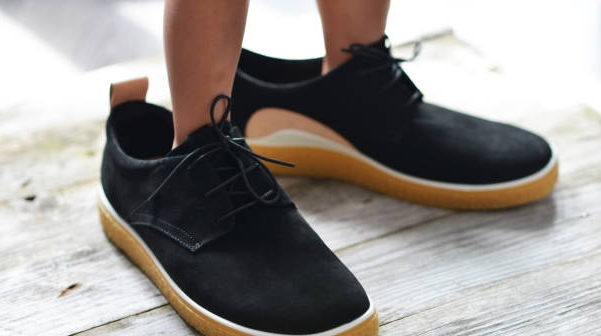
How to Make Wide Shoes Fit Tighter: 7 Effective Ways
Nothing compares to the disappointment of putting on a brand-new pair of shoes you can’t wait to show off only to discover that they are just a little bit too big. However, with a few tips and tricks, you can learn how to make shoes tighter.
Our helpful guide on how to tighten thigh-high boots, trainers, and more is a good alternative to getting your shoes exchanged for a tighter fit when that isn’t always possible. Additionally, if you have your heart set on a particular look or struggle to find shoes that fit comfortably, it will be a huge help.
Table of Contents
How to Tell If You Need Smaller Or Tighter Shoes
The most common sign that your shoes need to be tightened is when you can’t walk comfortably in them. Naturally, this only works for shoes that are one size too large in length or width; it would be difficult to shrink a pair of size 12 shoes to an eight, for instance.
Shoes that aren’t properly fitted have a lot of room around the heel and toes. As a general rule, shoes are considered to be too large if you can fit more than a finger’s width behind your heel. Similarly, if your big toe and the end of the shoe are separated by more than a half-finger, think about tightening them or getting a smaller size.
It is normal for the heel to slightly slip, but not too much, as this can lead to blisters and chafing.
How to Make Shoes Smaller: 6 Ways
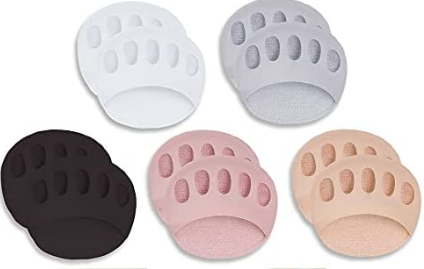
1. Ball of Foot Cushions (Half Insoles)
To make shoes smaller for my summer sandals, flats, or pumps, ball of foot cushions are the most practical insole type. They will not only raise your foot a little bit so that the toe straps of the shoe can keep it there, but they also add more padding and grip under the balls of your feet.
This keeps toes from sliding around in your shoes when it’s warmer outside. For flats, sandals, heels, and dress shoes, this style of half-insole works best.
I strongly advise wearing these insoles with open-toe heels, especially if you’re sporting a d’Orsay or other similarly capped high-heel style.
There are 2 types of the ball of foot insoles that I personally use:
- Gel ball of foot cushions from Dr. Scholl’s
They are more substantial than a typical half-insole, have gripping textures to prevent slipping, are reusable, and washable, and the sticky surface won’t harm the inside of your shoes.
A six-month warranty is also included with these! Your feet might start to perspire as a result, which is a drawback. best when worn barefoot.
- Genuine Leather half insoles from Pedag
A leather insole works well as a great, permeable substitute for a gel insole. These work well to slightly reduce the size of shoes, add traction under the toes, and prevent perspiration on your feet. They are thinner than a gel ball of foot cushion. Walmart offers a wide selection of top-notch ball of foot cushion brands.
TIP! Ball of foot cushions make shoes even smaller when used with heel liners. This brings me to my next item on the list…
2. Heel Liners for Shoes
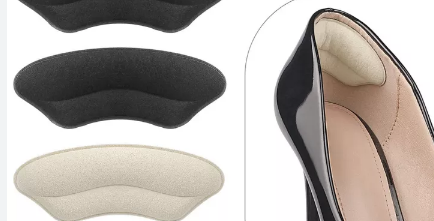
Heel liners for shoes, or back of-heel inserts, are 3″ strips that attach to the inside back of the heel of your shoe.
Great for reducing the length of the shoe, preventing heels from slipping out, enhancing comfort, and avoiding blisters. does a great deal for such a small strip!
These come in a wide variety of materials, such as gel, fabric, and special latex-free materials. I found these nifty heel liner-meets-insole that will help make shoes even smaller in & around the back of the shoe!
In particular, if the sizing issue is with the length, heel liners are a covert solution for overly large open-toe heels.
3. Full-Size Insoles
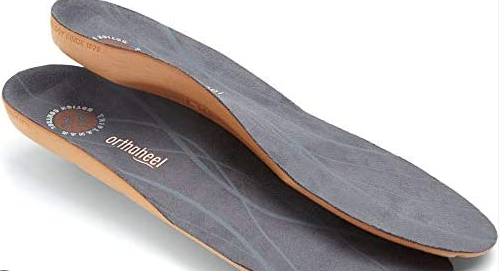
Insoles to make shoes smaller are a personal fave & easy go-to, to make shoes fit smaller. Full-size insoles are a great option for a shoe that is generally larger. Consider athletic footwear like sneakers, boots, and closed-toe dress shoes like oxfords and loafers.
There are a ton of branded and unbranded options available in a wide range of materials, sizes, colors, and shapes.
You can find more generic insoles (you know, those flat, cut-to-size types) but I prefer ones that cater to the specific type of shoe you’re trying “shrink”.
You can easily find insoles for dress shoes with flat or high heels, sock-absorbing ones for sneakers, and even flip-flop sandals.
You can get gel ones like Dr. Scholl’s Float on Air insoles for the most comfortable experience. Or you can opt for leather insoles, like Pedag insoles for heels, or Dr. Scholl’s cushioned insoles for flats.
Since they are breathable (great for summer! ), I highly recommend them for everyday use.). Some of my fave brands include Dr. Scholl’s, Pedag, & Vioniv but there are many non-branded insoles that work well too!
4. Toe Inserts for Shoes That Are Too Big
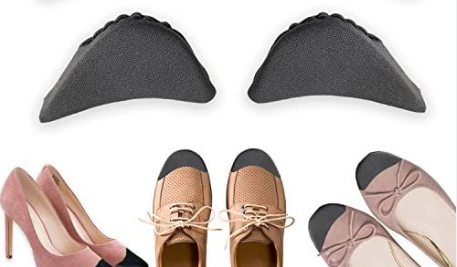
If you have a closed-toe shoe that is much too long for your foot, there are excellent alternatives. You can add easily add toe inserts for shoes that are too big to act as shoe filler.
These are great for cutting the length of shoes, and you can also use them with a ball of foot cushions or full-length insoles.
As a result, the front toe portion of the shoes now fits even more snugly. Or combo your toe insert with heel liners and a ball of foot cushions to make your shoes even snugger!
The two shoe fillers I have personally tested out & reviewed are Sizers (ASOS has recently come up with a Sizers dupe, btw!). These are excellent for ballerina flats, closed-toe heels, and more delicate footwear.
Shoolex “Make ’em Fit” is another that works for all types of close-toe footwear, including wider boots and shoes. Click here to read my complete review of these shoe fillers!
Since both companies updated their products after I wrote my reviews, I’d strongly advise trying their fresh, improved inserts!
Both brands offer 3 sizes of washable, sturdy, and much better-than-stuffing-cotton-into-the-tips-of-your-shoes shoe inserts to help big shoes fit smaller! However, only closed-toe shoes can be worn with either of them.
5. Shoe Tongue Pads
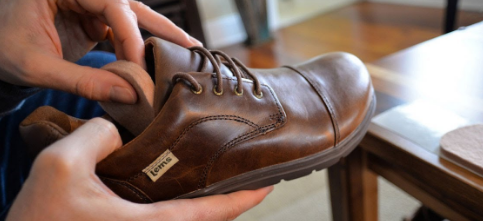
Unless you are one of those people with a low instep or arch, you’re probably not too familiar with shoe tongue pads. Although they are not the most interesting shoe accessory, they are extremely useful!
Great for sneakers, oxfords, loafers & more, a tongue pad is a thick felt-like material that sticks onto the inside part of the shoe “tongue”.
The tongue, a strip of material found under your shoelaces, does an excellent job of narrowing wide shoes. They are also available from Walmart and eBay in a variety of sizes.
6. Socks & Footies
Why not choose something from your closet if you’re going to be wearing flared jeans and long trousers? Yep, the #6 item on how to make shoes smaller is socks!
You can either wear your regular socks or, if you’d prefer your socks to stay hidden inside your shoes, footies are your best bet. Funny enough, breaking in new shoes is a breeze with socks!
Footies (aka “hidden socks”) come in many styles & colors, and if you get the right ones for your shoes, no one, including you, will notice them. Walmart, Zappos, and Bloomingdale’s all carry footie socks in a variety of sizes, hues, and patterns.
Keysocks are great knee-high, no-show socks for flats & heels (as pictured above) to wear underpants. Listed here, you can read my complete Keysocks review. They now come in many more prints & colors too
7. Getting a Cobbler to Make Shoes Smaller
There is another option to make your shoes smaller. And it’s called a cobbler (that person who fixes shoes for a living, not the drink or dessert!).
Under the original shoe lining, a cobbler can skillfully insert one or a combination of heel liners, tongue pads, tongue pads, and heel grips.
Yes, the cost will be higher than it would be for a professional to perform the same task, but it will last longer and be more practical than wearing the same pair of shoes repeatedly. Much simpler than regular cleaning, replacing, or repositioning shoe inserts or shoe fillers!
If you decide to visit a cobbler to have your shoes adjusted, wear a newer or more recent pair. As you will get more wear out of a newer shoe (before other parts start to deteriorate), it will justify the cost of the service and nip the problem in the bud, right from the start.
How to Make Sandals Fit Narrow Feet
Throughout the summer, sandals are a must-have because they keep you cool while also being incredibly versatile for both casual and formal settings. Finding sandals that fit comfortably can be challenging for people with narrow feet, unfortunately. The best recommendation is to look for sandals that are specially made to fit narrower feet, but this typically restricts your options. There are some techniques you can use for a tighter and more comfortable fit if you’ve found the ideal pair of sandals but they are too wide for your feet.
In order to wear strappy sandals, you’ll need to make the straps smaller. A cobbler or shoe repair professional can do this with ease. Simply cut any loose straps with a pair of scissors if you want to try making the straps smaller on your own. Cut the straps to the correct length after measuring them. After trimming the straps to the desired length, reattach the ends with super-strong glue. Make sure the glue you use won’t harm the sandals’ material. Before wearing, let the glue completely dry out.
A different suggestion to try with leather sandals is to completely wet the footwear and then allow it to air dry. Typically, sandals made of plain leather or uncured leather will shrink by up to 50% in size. Once the shoes have been wet, dry them in the dryer or use heat from a blow dryer to hasten the process.
Finally, adding bulk to your foot with comfort inserts is a quick fix for getting sandals to fit narrow feet. You can buy inserts at a wide variety of shoe stores and convenience stores for a very reasonable price.
Buying Shoes for Narrow Feet
Although there are a few tricks you can use to make regular shoes fit narrow feet, purchasing shoes made specifically for narrow feet is the best course of action. In order to eliminate foot pain and discomfort permanently, narrow shoes are made to fit narrow widths properly and to offer support and comfort during all of your daily activities.
Leading the industry in specialty shoe sizing, VANELi is proud to provide a wide selection of shoes for women with narrow feet, including flats, dress shoes, sandals, and athleisure footwear. Here are some of our top picks for stylish and incredibly comfortable women’s narrow shoes!
How to Make Narrow Shoes Wider
7 ways to stretch out your shoes
- Put them on in the evening. Try wearing your shoes around the house if they’re just a little bit uncomfortable. …
- a hair dryer and thick socks. …
- Ziplock freezer bag…
- The potato trick with peels. …
- shoe trees that are movable. …
- shoe stretching liquids and sprays. …
- Track down a professional in shoe repair.
Final Thoughts on How to Make Shoes Smaller
In sum, of course, there is no magic solution to making shoes smaller, or how to make big shoes fit. However, whenever possible, I always advise purchasing the correct shoe size for your foot.
But as life isn’t perfect and neither are our shoes & feet, adding a few inexpensive shoe accessories to hack your way into making shoes fit tighter is never a bad idea (especially if it makes your heels more comfortable & decreases the chances of injury!).